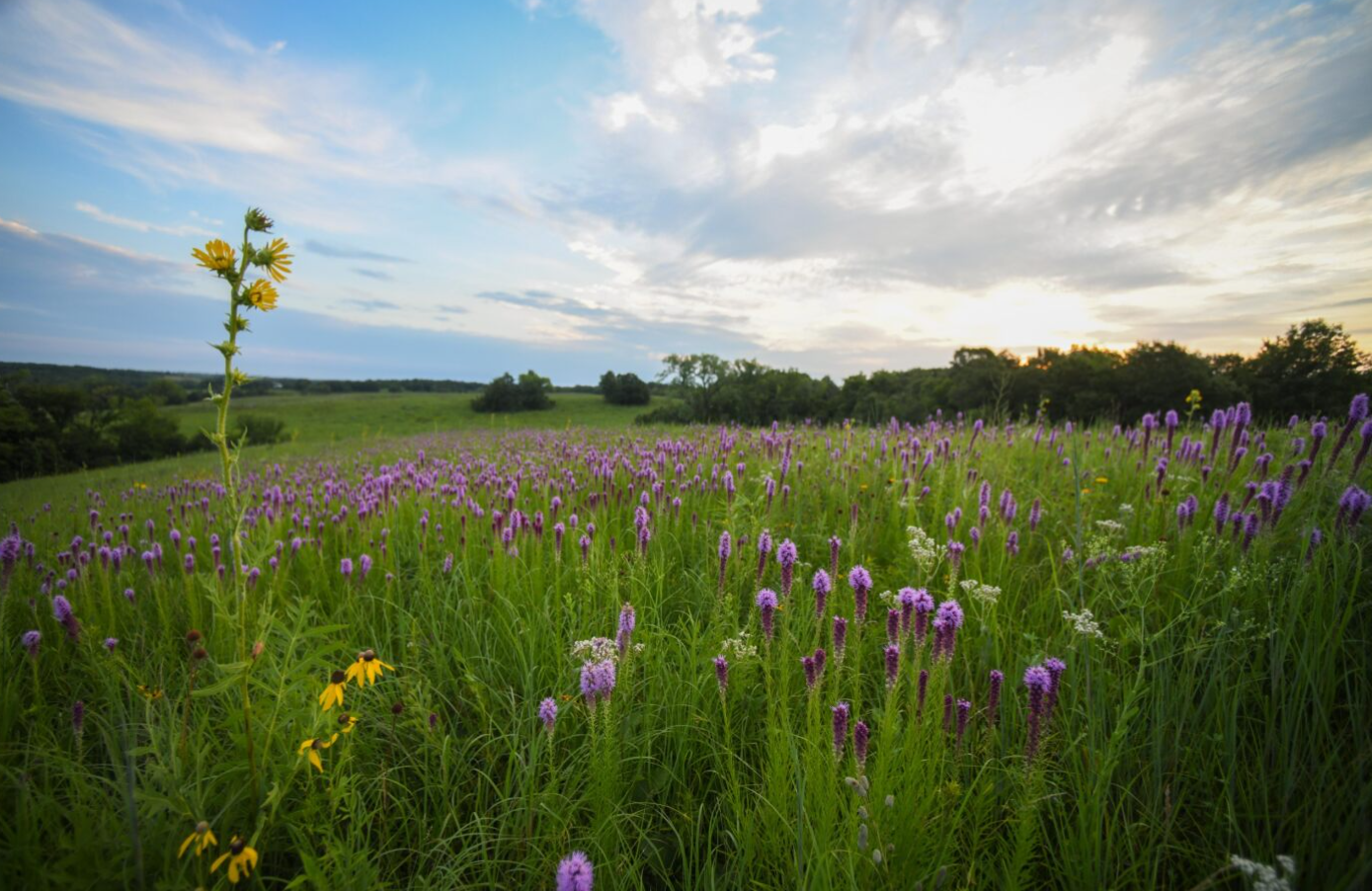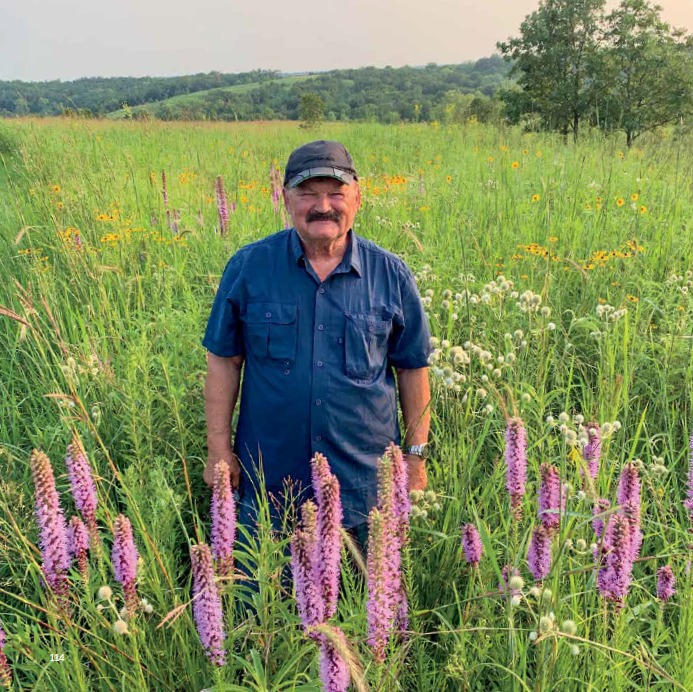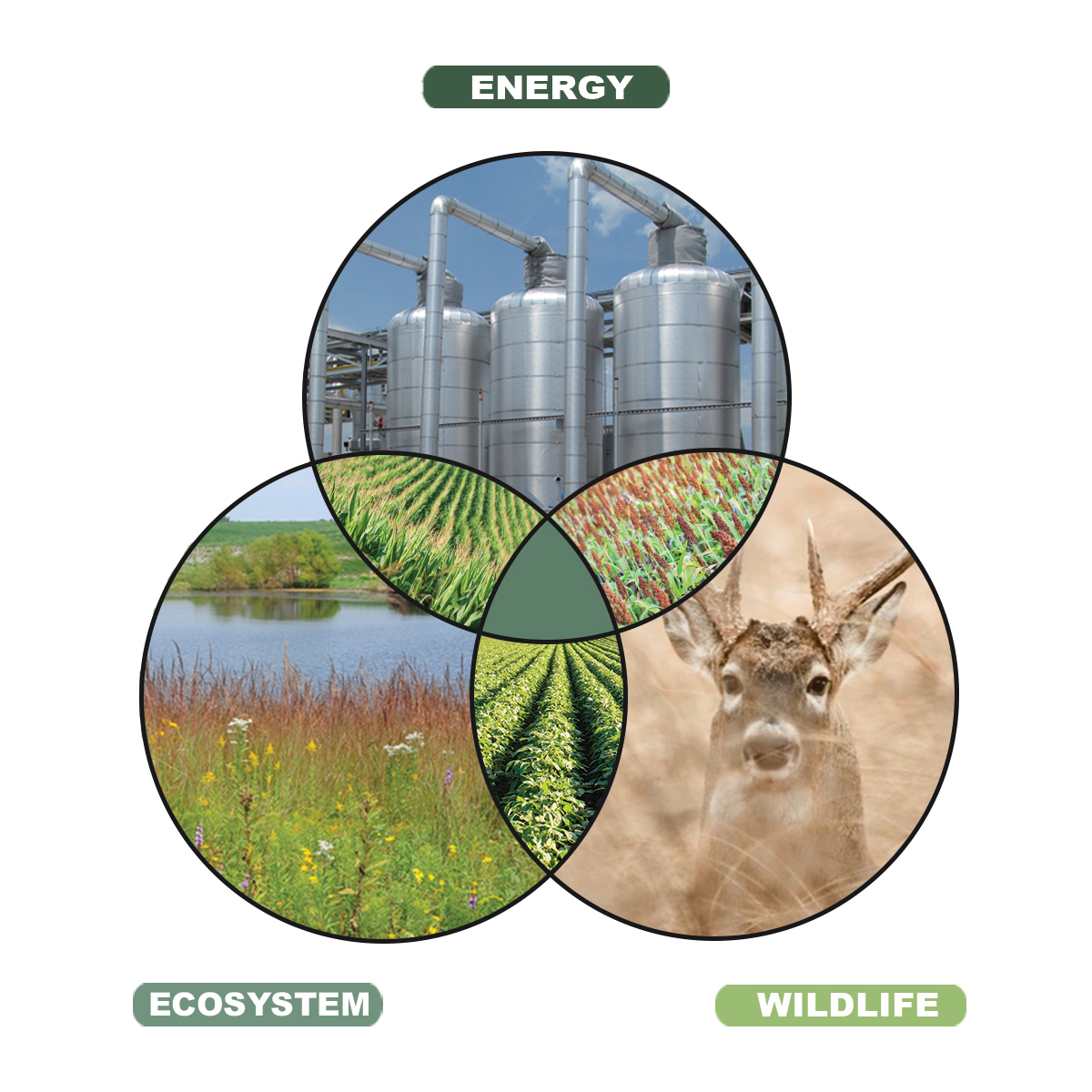
By Dan Looker
Rudi Roeslein was born in Salzburg, Austria, not far from mountain meadows where the movie, The Sound of Music, was filmed. His family emigrated to St Louis when he was a boy and today Roeslein has a vision of spreading different flowering fields–30 million acres of native tallgrass prairies–in his adopted country, the U.S.
This isn’t mere Hollywood sentimentality. Roeslein is a practical businessman who founded Roeslein & Associates, a private engineering firm with $600 million in revenue and among the fastest growing in St. Louis. If you’ve popped open an energy drink or can of beer lately, chances are good that the can was made in a factory designed by Roeslein (pronounced race-line). The business has projects in more than 60 countries across six continents.

His success and good fortune allowed him to buy a northern Missouri farm, where he has planted 1,000 acres of native prairie. This April, he was out on the farm hunting with his grandchildren.
“As a hunter and landowner, I am grateful for the privilege of allowing my friends and family to harvest a giant buck or doe from my prairie fields,” Roeslein says in the introduction to the book, Prairie Power: How Prairies Can Heal the Planet. He found that walking those fields is much more than trophy hunting. “A trophy can be a monarch butterfly caterpillar, etched in my memory as it munched on a milkweed. Or a bobolink or meadowlark singing from a compass plant….A trophy, I now know, is something that reminds us that humans are just one part of the vast biological network we call home.”
Prairie hay is also key to another business started by the St. Louis entrepreneur—Roeslein Alternative Energy. It mixes the prairie biomass with livestock manure in anaerobic digesters to produce renewable natural gas. That fuel is already being injected into the national natural gas pipeline grid. This provides a market for the hay, along with environmental benefits from prairies such as restoring soil and cleaning water runoff as well as sequestering carbon–another developing market.
Roeslein began the process for making renewable gas in 2012 when he partnered with Premium Standard Farms, a large hog producer which is now part of Smithfield Foods. That’s when he formed the renewable energy company. The project was dubbed Horizon I. Today it’s selling renewable natural gas into the California market.
Now, Roeslein Alternative Energy is starting Horizon II, a project that will offer farmers in northern Missouri and Southern Iowa financial and technical support for seeding up to 40,000 acres of native prairie and cereal rye cover crop plantings that can be used as a feedstock for renewable natural gas. They also provide improved soil health, clean water, flood control and habitat for native wildlife.
The five-year project began last winter with frost seeding of 1,000 acres of prairie near Princeton, Missouri, says Will Higgins, Manager for Grants and Strategic Development for the energy company. It seeks to plant another 7,000 acres this year, mainly in the Grand River Valley of Iowa and Missouri.
Earlier gas production started with large hog farms and dairies, and did not include prairie hay. “You need a certain number of animals to make that [economically] feasible,” Higgins says.

Establishing prairie fields extends the amount of carbon available for anaerobic digestion of manure into gas, he explains.
“What that allows us to do is to work with smaller farms and enable non-livestock farmers to generate revenue from the renewable natural gas market,” he says.
An $80 million USDA Partnerships for Climate-Smart Commodities grant has been awarded to a partnership of 13 public and private entities led by Roeslein Alternative Energy. Horizon II will provide owners of highly erodible land with income to care for that property in a new way. Incentives include:
–Rent: $160 per acre per year for highly erodible land for the duration of the contract.
–A turnkey approach: Horizon II pays all expenses for prairie seed, installation, and maintenance for the first two years.
–Renewable energy revenue: Beginning in year 3, landowners receive $37 per ton of harvested prairie biomass delivered to the RAE anaerobic digester that will be located near Albany, Missouri.
–The landowner receives $1 per ton if RAE handles harvest and delivery.
–Potential environmental credit compensation: Additional income will come from carbon sequestration and other ecological services (landowner receives 75%).
Some of the prairies might be sown on small areas along creeks and rivers and in erosion-prone fields, Higgins explains. Horizon II will work with partners, such as Iowa State University and the University of Missouri, to help develop profitable plans.
“When we stack the revenue to the producer from the renewable natural gas as well as the ecological services and wildlife benefits the prairie and cover crop practices provide, we have to create a model that quantifies and monetizes those benefits,” he says. “It needs to compensate the producer in a way that is competitive with the other options that a producer has.”
Roeslein believes that growing prairie to use as a feedstock for renewable natural gas can be a new crop for farmers with great potential. In his travels for his engineering business, he learned that Germany has almost 9,000 biogas power stations that account for almost 8 percent of that nation’s energy production—ahead of other renewables such as wind and solar power.
Horizon II is a step toward his grand vision of converting 30 million acres of marginal cropland to prairies over the next 30 years. As he puts it: “…restoring native grasslands in targeted watersheds and on hilly, erodible land has the potential to turn around our headlong rush to destruction and heal our planet, which has a raging fever.”
More information on Horizon II is available here: https://roesleinalternativeenergy.com/category/press-releases/
Published on May 1, 2024.
